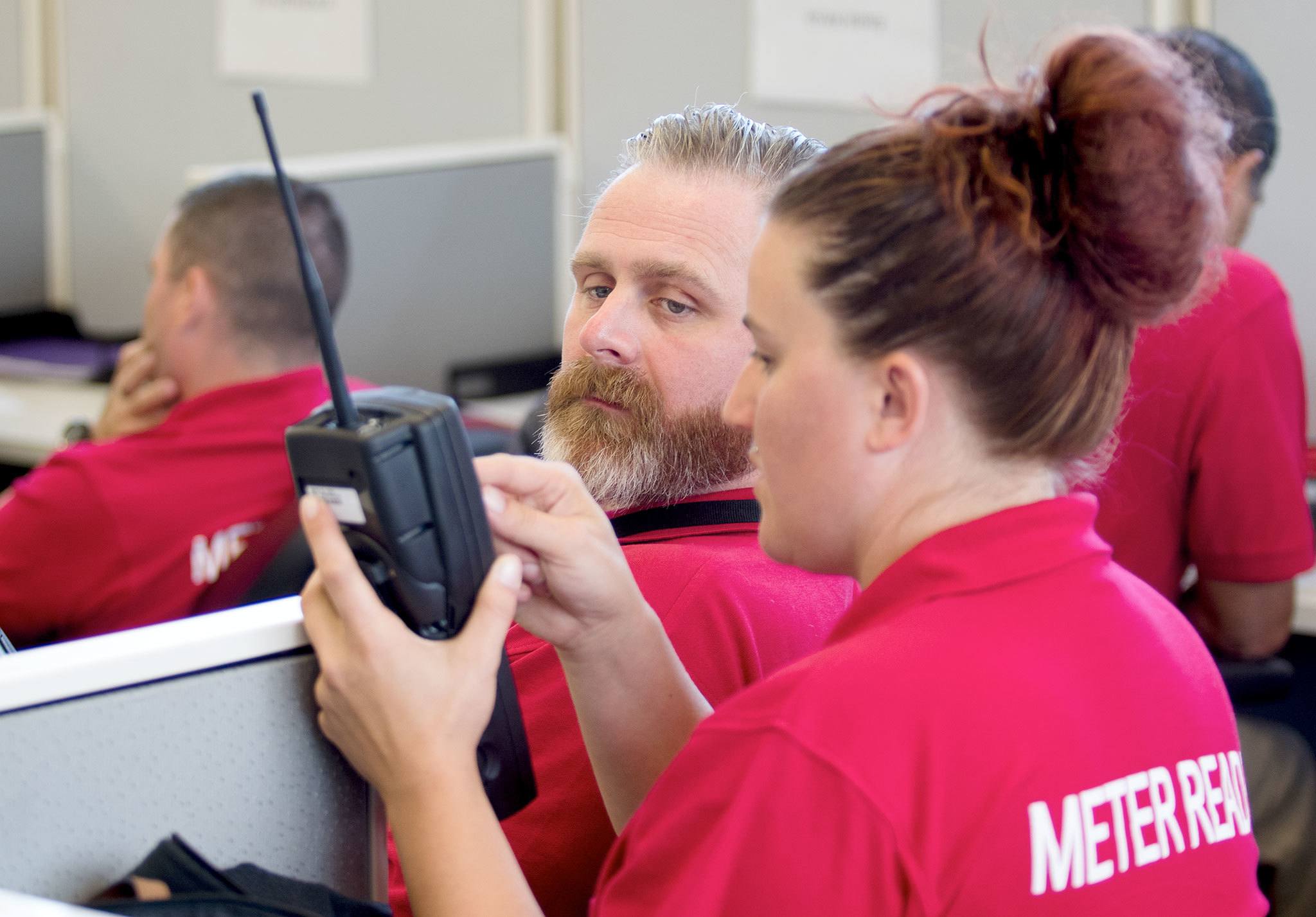EVERETT — It’s been more than a year since a change to Snohomish County Public Utility District’s billing system ignited an uproar from customers who flooded its customer service office with complaints of being overcharged.
The problems are in the past now, district officials say. The PUD made extensive software changes and hired dozens of contract workers to read every customer meter each month. That eliminated the need to estimate ratepayers’ bills every other month.
The district’s fix, which took nearly six months to implement and is expected to cost about $3.5 million a year, went live over the weekend. PUD staff members ran exercises in the preceding weeks to find and resolve bugs. They will soon find out how good a job they did.
The project is estimated to cost $10.4 million over three years. That is substantially less than the nearly $18 million cost estimate given when the PUD’s publicly-elected commissioners approved the plan in the spring. Some of the difference comes from work that has been shifted to a later date and other projects.
Most of the cost — about $8.9 million — is going to TruCheck, the Kentucky-based contractor hired to provide extra meter readers. The company’s 36 people, most of who were locally hired, are based out of the district’s Halls Lake building in Lynnwood.
TruCheck workers wear red shirts and yellow safety vests featuring the company and PUD logos. They also have PUD-issued photo badges.
The PUD alerted local law enforcement about the new contractors, said Will Odell, the project manager for the district. “We wanted to get out ahead of any potential calls we might get” asking about “a person in a red polo shirt” walking around someone’s home.
Customers cannot request to have a district worker or contractor read their meters. Routes have been designed for efficiency. The PUD and TruCheck are each covering about half the routes.
Part of the project’s cost came from buying hand-held devices that contract workers use to manage and input meter readings from the field. And PUD employees spent weeks altering the billing program, which is part of an integrated software system that encompasses most of the utility’s operations.
The problem began in September 2015 when the district finished integrating its billing program with its software platform, a system provided by SAP. Before then, a district employee would read a customer’s meter every other month, and the district would calculate and mail a bill.
But the SAP system did not permit bi-monthly bills, prompting the district to switch to sending out bills every month. Rather than hire new workers to read meters every month, the district sent out an estimated bill one month, followed by a bill based on a meter reading the next month. Over the two-month cycle, customers only paid for as much energy as they used, district officials said.
However, thousands of customers saw dramatic spikes in their bills. Fewer than half of the estimated bills were within 10 percent of the actual amount. More than 10 percent of bills were more than 20 percent higher than they should have been, according to a presentation by PUD staff to commissioners in March.
The PUD will still estimate bills on rare occasions, such as if a worker can’t get to a meter because a fence gate is locked. If an estimated reading is used, it will be noted in a box near the top of the bill.
The project is only expected to run for about three years. After that, district officials say, the PUD will have installed enough smart meters, which automatically transmit data to the billing system, that the contractors won’t be needed.
Dan Catchpole: 425-339-3454; dcatchpole@heraldnet.com; Twitter: @dcatchpole.
Talk to us
> Give us your news tips.
> Send us a letter to the editor.
> More Herald contact information.

























